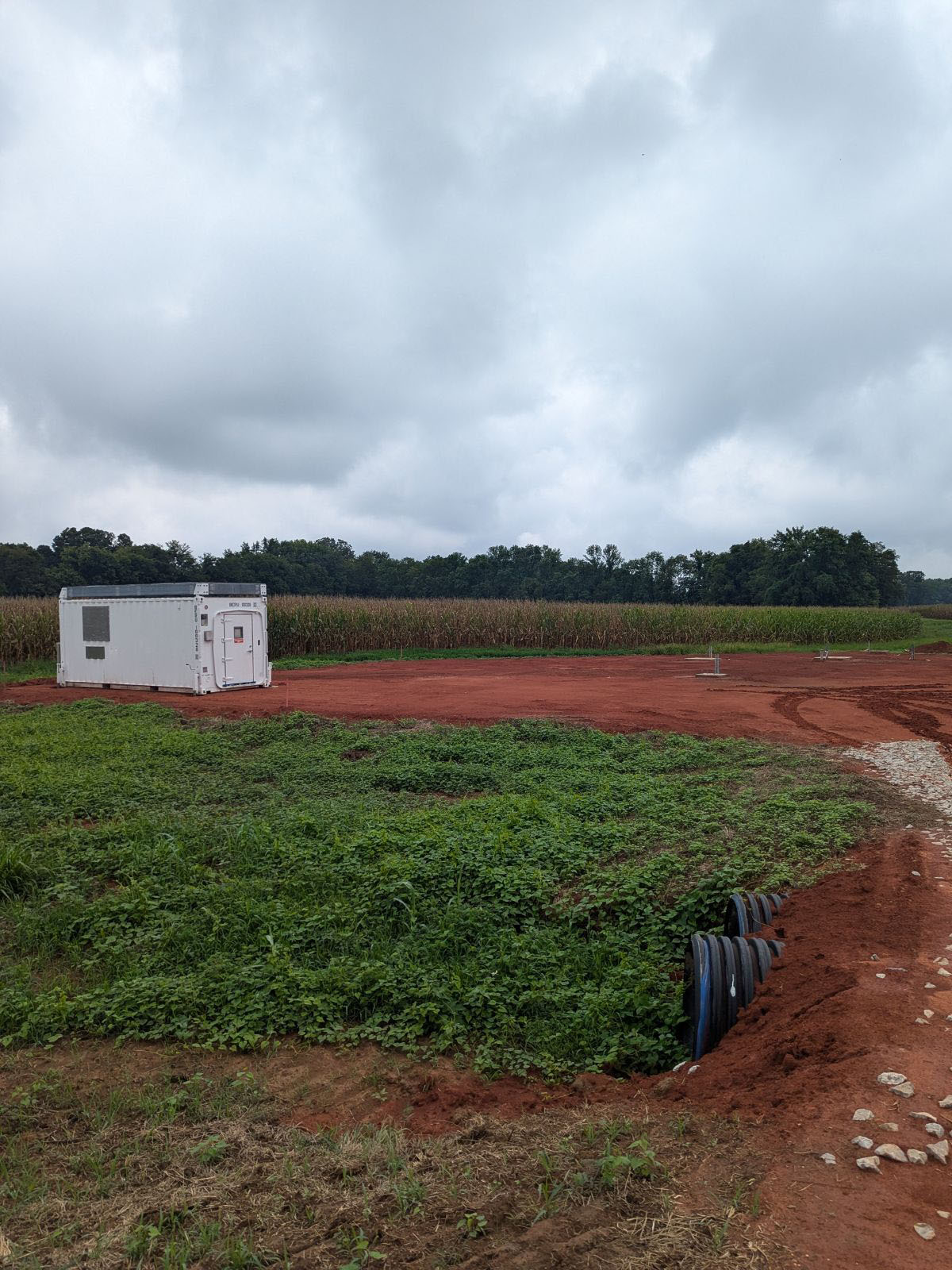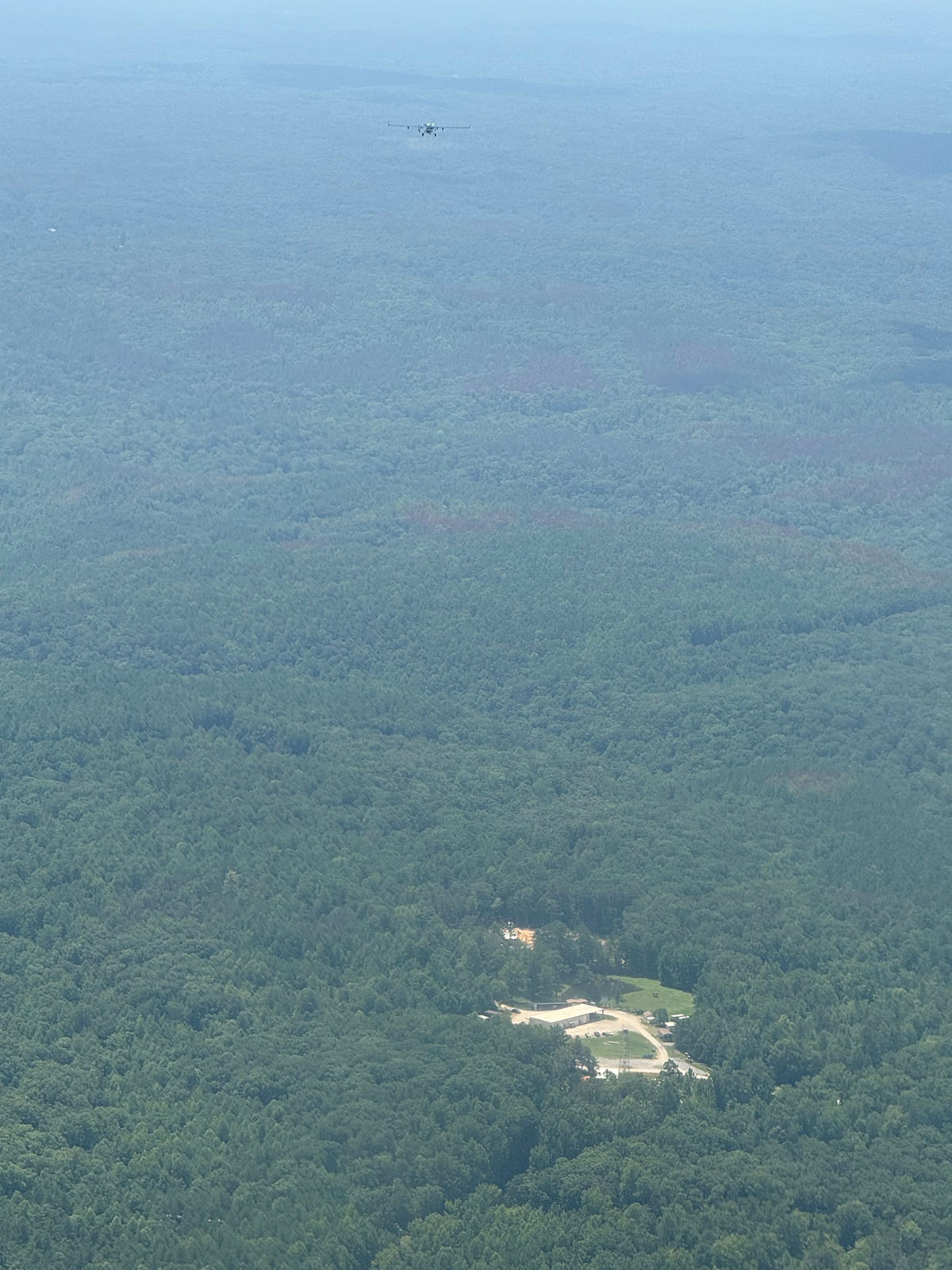
The world’s premier ground-based observations facility advancing atmospheric and climate research
Bankhead National Forest Observatory Opening Approaches
Published: 5 August 2024
Main and supplemental sites scheduled to be operational by October 1, 2024

The final push is underway to open the Bankhead National Forest (BNF) atmospheric observatory for business.
Staff from the Atmospheric Radiation Measurement (ARM) user facility are working in Alabama to have the BNF’s main and supplemental sites operating by October 1, 2024.
ARM wanted to open its newest observatory earlier in the year, but the schedule had to be revised because of delays related to weather, staffing, and receipt of some key electrical components.
With the items in its possession now, the team plans to turn on power at the main site around August 6 so installation can begin.
Later in the month, instrument installation will start at the main site in the forest and three supplemental sites at Courtland, Double Springs, and Falkville. Installation is currently expected to take about a week at each supplemental site and six weeks at the main site.
After the main and supplemental sites are operational, staff will continue ongoing work to prepare and set up additional BNF sites.
The Alabama State Historic Preservation Office is reviewing ARM’s two proposed scanning radar locations outside the forest to make sure they are not historic sites. If the locations are approved, the C-Band Scanning ARM Precipitation Radar would likely be operational in early October, followed by the Ka- and X-band scanning ARM cloud radars in late October or early November.
A 140-foot (42.7-meter) walk-up tower will be installed about three-quarters of a mile (1,200 meters) west of the main site. Instruments on the tower will sample a variety of properties below, within, and above the forest canopy. The current schedule is to build the tower in November, complete site development in December, and start instrument installation after the holidays in January 2025.
ARM plans to install the instrument field for BNF tethered balloon system flights in January or February, with flights currently set for March.
Guest Instruments and Research Funding

For scientists eager to start fieldwork at the BNF, ARM expects to be able to accommodate guest instruments soon after operations begin at the main site, likely November at the earliest.
Guest instrument deployments require an ARM field campaign proposal. Because research activities at the BNF might also need U.S. Forest Service approval, ARM encourages scientists to plan ahead and submit requests early for any potential guest instrument activities.
Appendix E of the ARM Field Campaign Guidelines includes a flowchart on Page E.3 to help scientists determine if they should propose their field research activity to ARM for coordination with the Forest Service. The flowchart also indicates the timelines that scientists should expect for proposal reviews and approvals. A full breakdown of the timelines follows the flowchart.
“We look forward to hosting as many people and campaigns as proposed,” says BNF Manager Mike Ritsche.
Funding for BNF research is now available from the U.S. Department of Energy (DOE). A new DOE funding opportunity is open for Atmospheric System Research (ASR), Earth and Environmental Systems Modeling (EESM), and Environmental System Science (ESS) program science in the Southeast United States. The announcement leverages the BNF and other recent DOE investments. Learn more about the new funding opportunity.
DOE has held funding opportunities for BNF research in past funding cycles. In July, DOE announced a set of new research projects from an ASR funding opportunity issued in October 2023. One of the principal investigators, Cleveland State University’s Thijs Heus, plans to use BNF data to study contrasts in shallow and deep convection. This is in addition to a group of BNF-focused studies announced in 2023 as part of a larger set of ASR projects.
Uncrewed Aerial System Activities

The ARM Aerial Facility is conducting flights of the ArcticShark uncrewed aerial system over and around the BNF from July 24 through August 7. These science and engineering flights will help the ARM Aerial Facility determine the optimal operational parameters for future missions in the area.
The ArcticShark is taking off from Cullman Regional Airport and flying in small to large square and rectangular patterns 6 to 34 miles from the airport. Visual observers on the ground and a chase plane in the air are tracking the ArcticShark to help ensure safe operations.
During its flights, the ArcticShark is collecting data on humidity, temperature, cloud composition, aerosols, trace gases, and land surface properties. The data will be made freely available through the ARM Data Center.
ARM plans to issue a special call this fall for ArcticShark flights in fiscal year 2025 at the BNF or Southern Great Plains observatory in Oklahoma.

Follow Us:
Keep up with the Atmospheric Observer
Updates on ARM news, events, and opportunities delivered to your inbox
ARM User Profile
ARM welcomes users from all institutions and nations. A free ARM user account is needed to access ARM Data.










